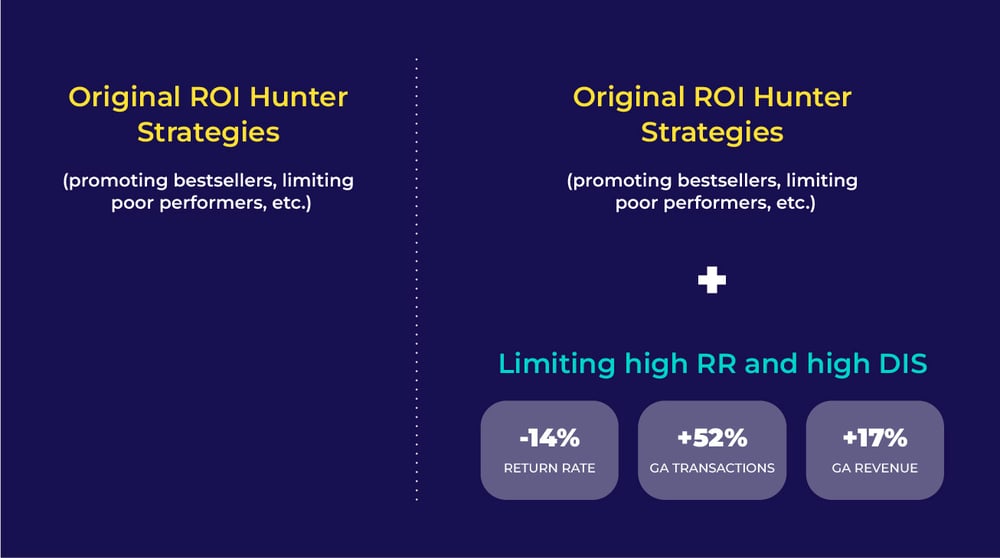The challenge
Gina Tricot originally partnered with ROI Hunter in July of 2021 to enhance their dynamic promotions with product performance data. Product-level data was integrated with their inventory from across their channels (Facebook Ads, Google Analytics, Google Shopping, etc.), enabling them to filter their inventory based on the performance of individual products.
From there they ran campaigns to achieve specific goals:
GOAL 1 - Increase online sales
- Promote bestseller products (highest revenue/transactions)
- Promote new arrivals (products in inventory for < 14 days)
GOAL 2 - Avoid wasting budget
- Limit promotion of poor performers (low revenue despite high spend) and products with low availability (few variants in stock), and put that budget toward bestsellers instead.
By peak season 2023, Gina Tricot was a power user of ROI Hunter, using the platform to power 95% of their dynamic ad spend. With this strong understanding of Product Performance Management, Gina Tricot was ready to add a third goal to the list for peak:
GOAL 3 - Scale profitably
The Solution
Gina Tricot wanted to ensure they were protecting their profit margin while they scaled their Meta spend during peak. To accomplish this, they decided to reduce their returns, and reduce the average Days in Stock of their products.
Return Rate (RR): how often a product is returned. High return rates have always been a thorn in the side of e-commerce, but the issue has become even more pronounced in recent years, with a number of large retailers adding fees to discourage the practice. By reducing returns, Gina Tricot could improve their bottom line.
Days in Stock (DIS): how long a product sits in inventory before it’s sold. With fashion (and fast-moving fashion brands in particular), it’s crucial to clear stock quickly, before the season/trend changes and the items need to be discounted. By shortening their average DIS, Gina Tricot could sell more products at full price, and make room for new collections.
First they used ROI Hunter to connect their RR and DIS data to their inventory through a custom source.
Using this newly connected data, Gina Tricot split their inventory into four segments based on the chance of return (low to high). In a separate filtration, they split their inventory into four segments based on average DIS.
With this new understanding of their inventory, Gina Tricot was able to identify and limit the promotion of every product with a very high return rate, and every product with a very high average DIS.
The Results
Gina Tricot ran an A/B split test during Peak Season to see if the exclusions were effective. Their original campaign had been heavily optimised for revenue growth; now they were comparing against a campaign optimised for profitable growth.
Campaign A: the original ROI Hunter strategies (promoting bestsellers, limiting poor performers, etc.).
Campaign B: the original ROI Hunter strategies (promoting bestsellers, limiting poor performers, etc.).
+
limiting items with a very high RR or DIS.
The results were staggering.
With the RR exclusion applied, Meta had redistributed the budget away from highly returned products, focusing instead on products with low and medium return rates, as pictured below.
.png?width=1663&height=1112&name=Sn%C3%ADmek%20obrazovky%202024-01-29%20v%2015.12.11%20(1).png)
Not only had the overall return rate of purchases from Meta dropped by 14%, but with the budget from high DIS items redirected to more popular products, the number of transactions had increased by 52%. The new campaigns also managed a revenue increase of 17% and a lift in return on ad spend (ROAS) of 11%!

Gina Tricot also applied this strategy to their Google PMax campaigns, reaching similar conclusions: their RR dropped.
By limiting the promotion of their most highly returned, and slowest moving products, Gina Tricot could now ensure that not only were they scaling, they were scaling profitably and sustainably.